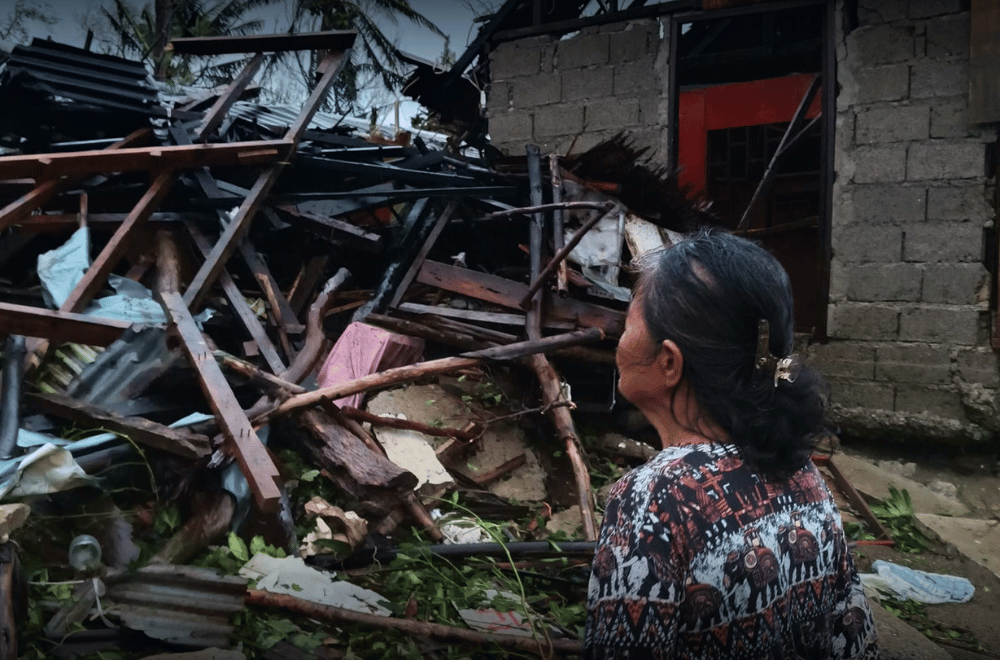The 2024 typhoon season in the Philippines was unlike any in history, marked by an unprecedented onslaught of six typhoons within just 30 days.
With over 13 million people affected, lives shattered, and resources stretched to their limits, the Philippines faced a dire test of resilience.
Super Typhoon Pepito, the strongest storm of the year with winds peaking at 195 km/h, made landfall on November 16, 2024 in Panganiban, Catanduanes.
This was the 24th named storm of the season and the sixth to batter the country in just one month, a stark deviation from the November average of one super typhoon in the basin, according to National Aeronautics and Space Administration (NASA).
The Japan Meteorological Agency said the simultaneous occurrence of four named storms in the Pacific was the first since records began in 1951.
Beginning with Tropical Cyclone (TC) Kristine and Leon in late October 2024, the chain reaction of devastation continued until November with Typhoon Marce’s 240 km/h winds, Super Typhoon Ofel’s storm surge, and Typhoon Nika’s torrential rains.
FACING THE STORM’S TOLL
The compounded effects of the storms left communities grappling with an estimated economic loss of P22 billion, according to the latest situational reports of the National Disaster Risk Reduction and Management Council (NDRRMC) on late November and early December.
A total of 1,499 road sections and 262 bridges across Luzon were rendered impassable.
Over 316,358 houses were damaged, with Regions 1, 2, and the Cordillera Administrative Region (CAR) bearing significant losses.
The damage to infrastructure reached an estimated P13.7 billion, with P10.57 billion from TC Kristine and Leon alone.
Damage to agriculture amounted to over P7.47 billion. This included significant destruction to irrigation systems, valued at P1.16 billion, leaving thousands of farmers grappling with uncertainty as vast tracts of farmland were inundated or destroyed.
The human cost was harrowing, with 174 fatalities, 148 injuries, and 25 individuals still missing as of December 2024.
A solemn tribute united the nation in grief as flags across the Philippines were lowered to half-staff on November 4, 2024, marking a National Day of Mourning to honor the lives lost to TC Kristine, with 150 reported dead as of that day.
More than 13 million people were affected, with over 46,000 families forced into evacuation centers.
Flooding was widespread, with 1,241 areas inundated, leading to 70 landslides triggered by relentless rains.
Entire towns and communities were submerged, and emergency responders worked around the clock to ensure safety and provide aid.
Relief efforts mobilized by government agencies and partners amounted to over P1.39 billion in aid, including 1.64 million food packs distributed.
HOPE IN THE AFTERMATH
Amid the relentless storms that battered the country in 2024, stories of resilience, compassion, and hope emerged as communities came together to rebuild and heal.
From unsung heroes offering aid to creative interventions bringing solace to the youngest survivors, these inspiring acts prove that bayanihan thrives in the toughest times.
After TC Kristine, artist Dee Jai organized art intervention workshops to help children cope with trauma.
Children were encouraged to express their experiences through drawings, depicting houses, floods, and nature.
Dee Jai used art as her personal coping mechanism, she hoped the children found similar solace.
“Art is not just something lovely to behold but has relevance beyond that… It can heal a person more so, a community,” she said.
The GMA Kapuso Foundation (GMAKF) also extended relief efforts to Bicol, Batangas, Cagayan, Isabela, and Quezon, almost 48,000 individuals received aid.
In Minalabac, Camarines Sur, over 800 children received Christmas gifts from GMAKF.
After TC Marce, GMAKF distributed food packs to 8,000 affected residents in Cagayan.
Aid also reached four municipalities in Isabela—Jones, Alicia, Cordon, and Echague. Over 8,000 residents received food packs.
A feeding program also catered to 500 individuals, while other GMAKF teams extended support to Aurora.
After Super Typhoon Pepito, over 6,000 residents in Catanduanes received relief goods from GMAKF, and more than 200 students from Mabini and San Miguel Elementary Schools were given early Christmas presents.
WALKING THE HARD ROAD
In the aftermath of storms, many communities across the Philippines continue to face the harsh reality of slow recovery.
For residents of Barangay Himagtocon in Lagonoy, Camarines Sur, the destruction of a footbridge has left them struggling to rebuild their lives.
Nearly two months have passed, yet the bridge remains unrepaired, forcing families and children to navigate perilous crossings daily.
Their determination to move forward is evident, but the need for urgent support and action has never been greater.
The story of Barangay Himagtocon is not unique; many communities face similar challenges after natural disasters.
In the face of relentless storms, communities across the Philippines stand resilient, yet their struggle linger.
Each challenge is a reminder of the fragile balance between recovery and hope, as the nation continues to rise, piece by piece, from the depths of devastation.



